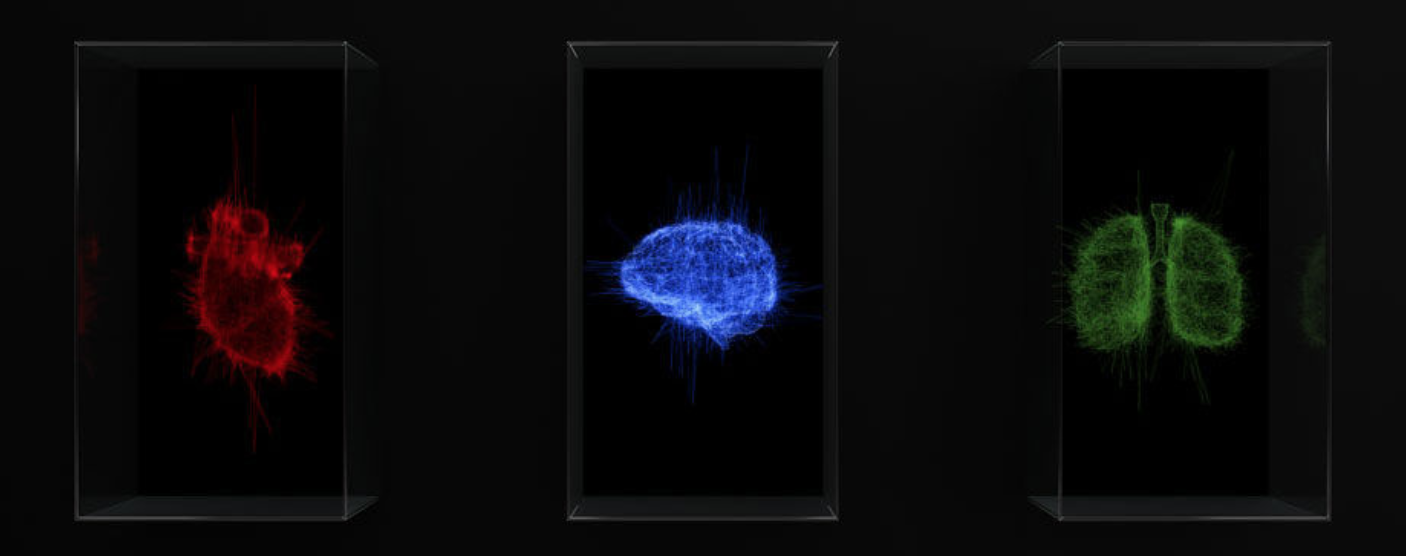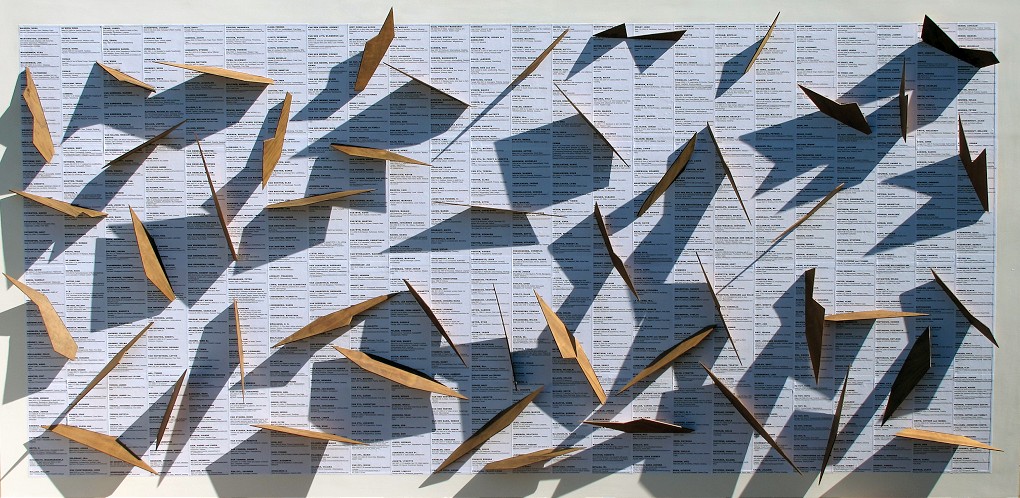
Blind Alphabet is a long-term project initiated in 1990. This three-dimensional dictionary is composed, to date, of 338 sculptural units. The individual works are presented as forms used to symbolize a word, difficult or abstract, beginning with the same letter of the alphabet. The sculptures, which can only be understood by touch, are stored in boxes, hidden and accessible only to blind people.
Boshoff is reversing the privilege between sighted people and blind ones. Rather than prohibiting touching the work, Blind Alphabet creates a dependence on some skills and the sensory acumen of blind people: the touch and the ability of reading Braille texts. Without a blind public, the Blind Alphabet would be incomprehensible and would also remain lost.
Pascal Haudressy: Un cœur qui bat [A Beating Heart]
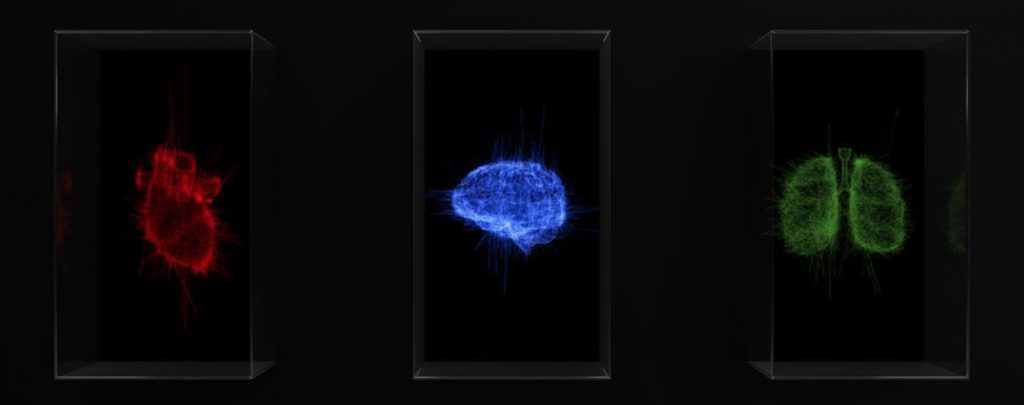
Formation, deformation, and information: incessant image flows while the calculations form a cyclic movement, a vibrating silhouette as if in a state of weightlessness.
To produce this pictorial material, both chaotic and ordered, Pascal Haudressy “messes up” computers and plays with their limits. He introduces “noises” that in turn induce uncontrolled modifications of the image. Caught up in an iterative process, the drawing no longer produces a fixed structure but forms that keep changing. These are pulsations, frequencies, phases and no longer measurable surfaces, like an electric graph.
Steve McQueen, Deadpan
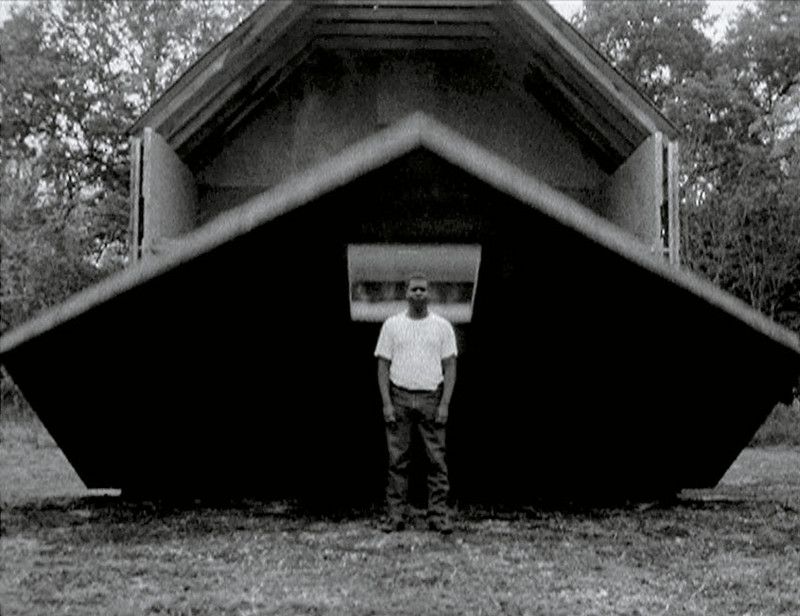
“In this installation, Steve McQueen declines the sequence from Steamboat Bill Junior (1928), where a wooden house front falls on the actor [Buster Keaton] protected by an open window. A dozen different shots, with different values and angles, are edited according to cinematographic aesthetics and rhetoric. Steve
McQueen’s black male body, cropped from the white man Buster Keaton, refers to representations of black identity. The last shot shows the wooden wall falling on the screen, completely obscuring it. The screen wall of the exhibition room then merges with the wall of fiction.” Françoise Parfait
Julien Levesque: Data Sonata
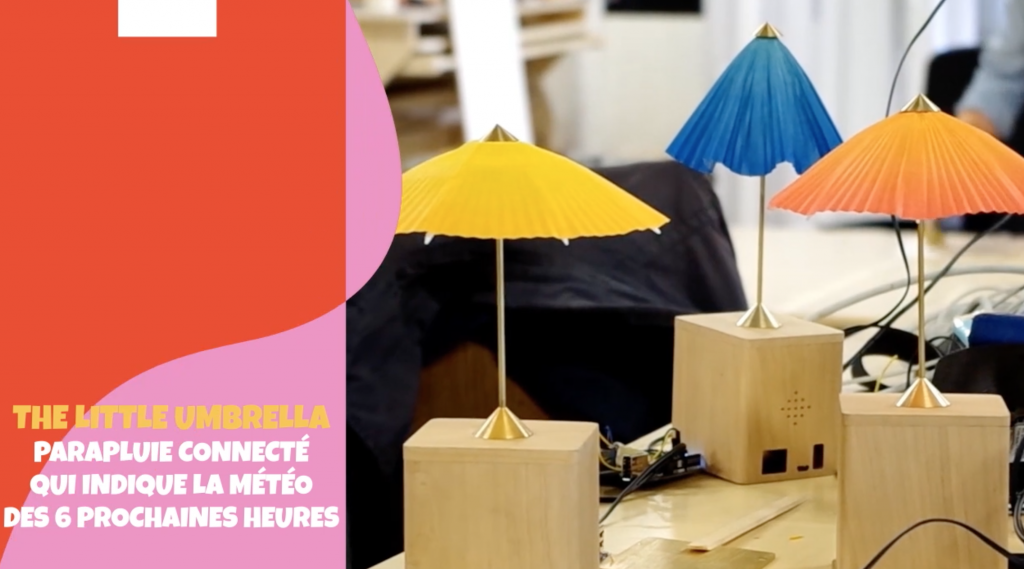
Data Sonata transcribes our daily journeys over the course of a year in the sensitive form of a piano sonata accompanied by a score. The work put our Google location data into an audible and material form of a 33t vinyl record. As a way to better reveal the hidden side of our digital footprint, Julien Levesque takes the personal data of his relatives to give to their data new emotional and musical aspect. These compositions are as many sonatas and scores as there are personal stories, trajectories in our connected lifestyles. Julie Levesque translates our daily-connected life through a music-loving algorithm.
Albertine Meunier: Le Livre Infini [The Never-ending Book]
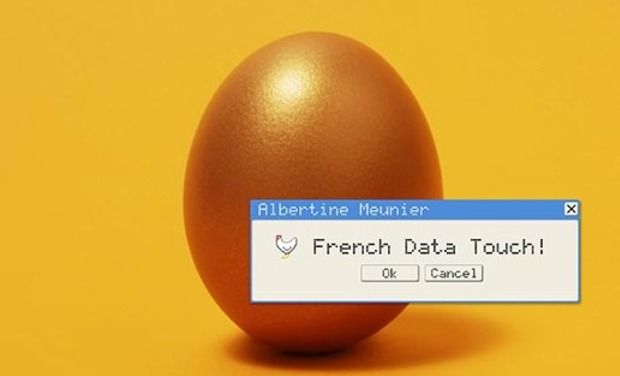
The Livre Infini/ The Never-ending book, designed by Albertine Meunier, is an entirely white book, whose content only appears when you turn its pages. In this original device for reading digital and multimedia content, mixing text, images and videos, the images come to life in front of us and the words can be heard or read, infinitely . . . like a printout of digital material. By offering a new way of printing digital content, the Never-ending book, makes a bridge between digital and nostalgia for paper.
Compagnie Shonen, Lesson of Moon
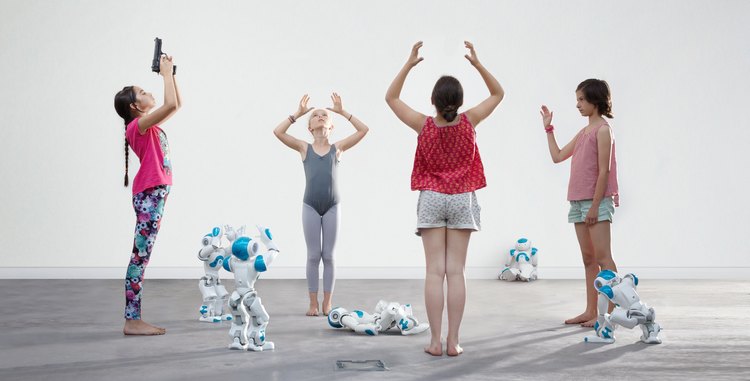
The duo composes “tableaux vivants” inspired by icons of religious painting, in a ritualized choreography where contemporary gestures, such as those performed by the digital natives on their touch-sensitive tablets, are slipped into. Evoking a mystique of the body fused with its past and present representations, the show highlights our relationship to a new human community, in the presence of the robots that it generates and that transform it.
A young dancer and a robot are involved in a process of empathic mimesis questioning the representations and perceptions of the body in a new technologies era. The duo is like “living frames” inspired by icons of religious paintings. Some gestures, which imitate the touch made by some digital natives on their tablets, are slipped into this ballet. Evoking a mystique of the body though some representations come from past and present, the performance highlights some new ways of interacting that emerges with new technologies in a community where robots and humans start living together.
Cécile le Talec: Stanza
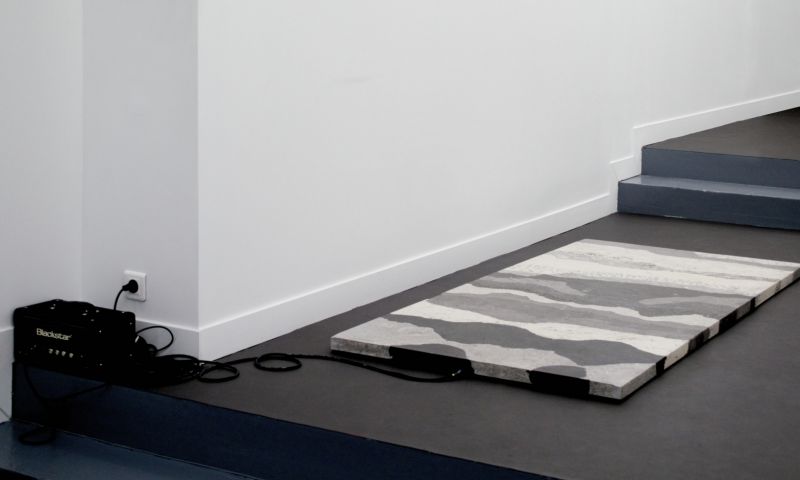
As with her other works – notably the Aubusson tapestry “Panoramique
Polyphonique” – Cécile Le Talec combines traditional craftsmanship and materials
with digital technologies.
Stanza is a slab, made of scagliola a reconstituted marble, on the scale of the human body. The audience is invited to lie down on this “pedestal”, like a living model, in order to listen to the sounds of the Earth, diffused inside the marble. In Italy, the scagliola is also called “hot stone” because it reflects the heat of the body, accentuating the sensual relationship to the work. The drawings visible on the marble slab show the sound spectrogram of the earth’s vibrations. As with her other oeuvres, like the Aubusson tapestry “Panoramique Polyphonique”, Cécile Le Talec combines traditional craftsmanship and materials with digital technologies.

